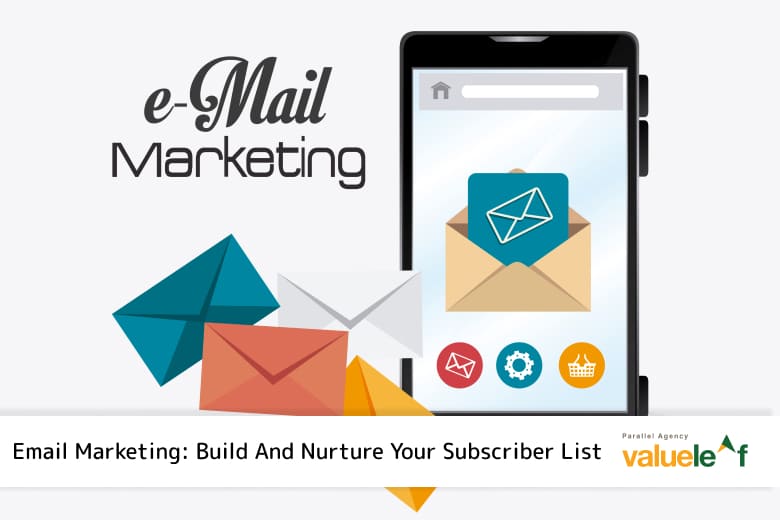Have you ever browsed a website, added items to your cart, but left without completing the purchase—only to see ads for those exact items later? That’s retargeting, one of the most effective strategies in digital marketing. Retargeting involves reconnecting with potential customers who have interacted with your brand but didn’t convert. Retargeting boosts engagement enhances brand recall, and drives conversions by reminding them of what they left behind. Platforms like Google Retargeting Ads, Facebook Remarketing Ads, and specialized tools like AdRoll make this process seamless. This blog will walk you through everything you need to know about successful retargeting, from Way It Works to best practices and key strategies for maximizing your Retargeting ROI.
Ways The Retargeting Work
Retargeting is a digital marketing technique used to reengage users who have previously visited your website or interacted with your content. It ensures your brand stays at the forefront of their minds, increasing the likelihood of conversion.
Types of Retargeting
Retargeting is a smart way for businesses to reach out again to people who have shown interest in their products or services. By learning about the different types of retargeting, companies can improve their ads and connect better with potential customers.
Pixel-Based Retargeting
- Uses browser cookies to track visitors.
- When someone visits your website, the pixel fires and saves their activity.
- Later, ads for your product or service are displayed to them as they browse other websites.
- Example: Showing a dynamic product ad for an item left in the cart.
List-Based Retargeting
- Uses email lists to target specific users.
- Ads are displayed only to people whose emails are uploaded to platforms like Facebook Remarketing Ads or Google Ads.
- Works well for personalized campaigns customized to past customers.
Reason Why Retargeting is Important
Retargeting is like a friendly reminder for people who showed interest in your website or products but didn’t take action right away. It works by using cookies to track visitors who have been on your site, and then showing them ads on other websites they visit.
1. Increases Conversion Rates
Only about 2% of website visitors convert on their first visit. Retargeting helps bring back the remaining 98% by showing customized ads to those who interacted with your site but didn’t complete an action.
2. Improves Brand Recall
Retargeting ads keep your brand visible to potential customers, reminding them of their interest and building trust over time.
3. Maximizes Return on Investment (ROI)
By focusing on users who’ve already shown interest, retargeting increases the efficiency of your ad spend, leading to higher Retargeting ROI.
4. Reduces Cart Abandonment
With dynamic product ads, retargeting allows businesses to show personalized messages, offering discounts or reminders to complete purchases.
5.Supports Customer Retention
Beyond first-time conversions, retargeting can upsell or cross-sell products to existing customers, improving long-term retention.
Also Read : Scaling Your Business with Performance Marketing in 7 Simple Steps
Setting Up a Retargeting Campaign
Creating an effective retargeting campaign involves strategic planning and the right tools. Follow these steps to set up your campaign:
1. Install Tracking Pixels
Add tracking pixels (like the Facebook Pixel or Google Ads Tag) to your website. These collect visitor data, enabling precise audience segmentation.
2. Define Your Audience Segments
Divide your audience into specific groups based on their behavior, such as:
- Visitors who browsed certain pages.
- Users who added items to their cart but didn’t check out.
- Customers who made a purchase (for upselling or cross-selling).
3. Choose a Retargeting Platform
Select the platform that aligns with your goals, such as:
- Google Retargeting Ads for wide reach through the Google Display Network.
- Facebook Remarketing Ads are used to engage users on Facebook and Instagram.
- Tools like AdRoll or Criteo for advanced cross-platform retargeting.
4. Create Engaging Ad Content
- Use eye-catching visuals and personalized messages to re-engage your audience. Examples include:
- Dynamic ads showcasing abandoned products.
- Ads offering limited-time discounts or incentives.
5. Monitor and Optimize
- Track campaign performance metrics like click-through rate (CTR) and conversion rate.
- Adjust ad creatives, bids, or audience targeting to improve results.
Crafting Effective Retargeting Strategies
An effective retargeting campaign goes beyond simply displaying ads. It involves strategic planning, segmentation, and creative messaging to drive results. Here’s how to craft winning retargeting strategies:
1. Audience Segmentation
Break down your audience into smaller groups based on their behavior.
- Product Viewers: Users who viewed a product but didn’t take action.
- Cart Abandoners: Visitors who added items to their cart but didn’t complete the purchase.
- Repeat Buyers: Customers who purchased previously, ideal for upselling or cross-selling.
- Event Participants: Leads from webinars, events, or sign-up forms.
2. Personalize Your Ad Content
- Use dynamic ads to display personalized product recommendations.
- Example: For cart abandoners, show the exact items left in their cart with a discount offer.
3. Set Frequency Caps
- Setting frequency caps can help avoid overloading users with too many ads. This ensures that your ads remain engaging without becoming annoying.
4. Use Incentives Strategically
Encourage conversions with offers like:
- Free shipping.
- Discounts for completing a purchase.
- Limited-time deals.
5.A/B Test Ad Creatives
- Experiment with different ad formats, visuals, and messages to identify what resonates best with your audience.
Popular Retargeting Platforms and Tools
Choosing the right platform is key to the success of your retargeting campaign. Here are some of the most effective options:
1. Google Retargeting Ads
Way It Works:
- Google Ads uses the Display Network to show retargeting ads across millions of websites.
Best For:
- Wide reach and detailed segmentation through remarketing campaigns in Google Ads.
Example: Dynamic ads displaying recently viewed products on relevant websites.
2. Facebook Remarketing Ads
Way It Works:
- Facebook Pixel tracks user activity and shows ads on Facebook and Instagram.
Best For:
Visual engagement and audience interaction.
- Example: Carousel ads featuring multiple products.
3.AdRoll
Way It Works:
- An all-in-one platform for retargeting across web, mobile, and social channels.
Best For:
- Cross-platform campaigns with advanced analytics.
Example: Showing ads on social media and third-party websites simultaneously.
4.Criteo
Way It Works:
- AI-driven platform that uses real-time data for dynamic retargeting.
Best For:
- E-commerce brands looking for automated, high-precision ads.
Example: Displaying personalized product ads based on user browsing history.
5.LinkedIn Retargeting
Way It Works:
- Uses LinkedIn Insight Tag to retarget professionals based on profile and behavior.
Best For:
- B2B campaigns targeting decision-makers.
Measuring the Success of Retargeting Campaigns
Tracking the effectiveness of your retargeting campaign is essential to optimize performance and maximize ROI. Here’s how to measure success:
Key Metrics to Monitor
1. Click-Through Rate (CTR):
- Measures how many users clicked on your retargeting ad.
- A higher CTR indicates engaging ad content.
2. Conversion Rate:
- Tracks how many clicks resulted in desired actions, such as purchases or sign-ups.
- Optimize ad creatives and landing pages to improve this rate.
3. Cost Per Acquisition (CPA):
- Measures the cost of acquiring a new customer through your retargeting campaign.
- Lower CPA indicates a cost-effective strategy.
4. Retargeting ROI:
- Calculates the return on investment from your campaign.
- Example Formula: ROI = (Revenue Generated−Ad SpendAd Spend) × 100
5 . Engagement Metrics:
- Includes likes, shares, and comments on your ads, particularly for Facebook Remarketing Ads.
Best Practices for Successful Retargeting
To create a high-performing retargeting campaign, follow these proven best practices:
1. Segment Your Audience:
- Group users based on behavior (e.g., cart abandoners, frequent visitors).
2. Use Dynamic Ads:
- Personalize ads with product recommendations or customised offers.
3. Balance Ad Frequency:
- Avoid overexposure by limiting the number of times an ad is shown to the same user.
4. Create Strong CTAs:
- Use clear and actionable calls-to-action, such as “Shop Now” or “Complete Your Purchase.”
5. Leverage Multiple Platforms:
Use a mix of Google Retargeting Ads, Facebook Remarketing Ads, and other tools to maximize reach.
6. Rotate Ad Creatives:
- Refresh ad designs and messaging regularly to maintain user interest.
7. Ensure Mobile Optimization:
- Design ads and landing pages for mobile-first users.
8. Focus on Data Privacy:
- Comply with GDPR, CCPA, and other data privacy laws.
- Offer opt-out options and maintain transparency.
Conclusion
Retargeting is a powerful tool in digital marketing, enabling businesses to reconnect with potential customers and drive higher conversions. By using platforms like Google Retargeting Ads, Facebook Remarketing Ads, and other retargeting tools, you can strategically target users and maximize your retargeting ROI.
From setting up tracking pixels to crafting personalized ads, the key to a successful campaign lies in understanding your audience and continuously optimizing performance. With the right strategies and platforms, retargeting can transform casual visitors into loyal customers, boosting your bottom line.
Start your remarketing campaign today and leverage the power of retargeting to grow your business!
Also Read: Top 9 Paid Advertising Best Practices For Successful Campaigns
Frequently Asked Questions
Q. What is a good CTR for retargeting ads?
A. A good click-through rate (CTR) for retargeting ads is approximately 0.7%, which is significantly higher than the average CTR of 0.07% for standard display ads.
Q. What is a retargeting strategy?
A. A retargeting strategy involves displaying targeted advertisements to users who have previously visited your website or engaged with your content, aiming to re-engage them and encourage conversions.
Q. How can I improve my retargeting ads?
A. Enhance your retargeting ads by segmenting your audience, personalizing ad content, setting frequency caps to avoid ad fatigue, and using compelling calls-to-action.
Q. Why is retargeting important for my marketing strategy?
A. Retargeting is crucial because it re-engages potential customers who have shown interest, increases brand recall, and improves conversion rates by targeting warm leads.
Q. What are the benefits of using retargeting campaigns?
A. Benefits include higher engagement rates, improved ROI, increased conversions, and the ability to reach users who are already familiar with your brand.
Q. What are some effective retargeting strategies?
A. Effective strategies include dynamic retargeting, segmenting audiences based on behavior, using sequential messaging, and combining retargeting with email marketing.
Q. How can I set up a retargeting campaign?
A. To set up a retargeting campaign, choose a platform like Google Ads or Facebook, install the necessary tracking pixel on your website, define your target audience, create customised ads, and monitor performance to optimize results.
Q. What platforms support retargeting ads?
A. Platforms that support retargeting ads include Google Ads, Facebook, Instagram, LinkedIn, Twitter, and specialized retargeting networks like AdRoll.


